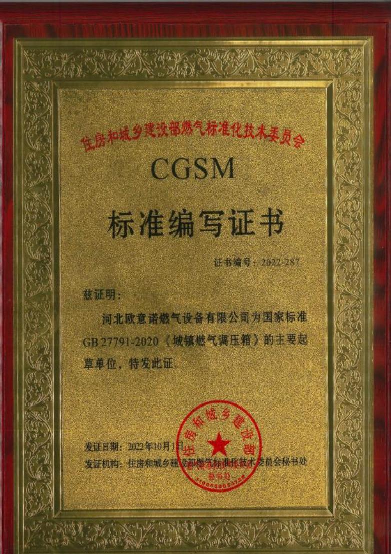
9 月 . 24, 2024 07:37
Back to list
Understanding the Functionality and Importance of Gas Pressure Regulators in Systems
Understanding Gas Regulators Essential Components for Safe Gas Supply
Gas regulators play a crucial role in ensuring the safe and efficient use of gases in various applications, from residential heating systems to industrial processes. A gas regulator is a mechanical device designed to control the pressure of gas flowing from a storage source—such as a gas cylinder or pipeline—into an appliance or distribution system. By maintaining a consistent outlet pressure, gas regulators prevent fluctuations that could lead to dangerous situations or equipment damage.
The primary function of a gas regulator is to reduce the high pressure of gas supplied from a storage tank to a lower, usable pressure. In most applications, gas is stored at very high pressures to facilitate storage and transportation. However, appliances like stoves, heaters, and industrial machinery require gas at much lower pressures to function safely and effectively. Without a regulator, appliances would be subjected to potential overpressure, leading to inefficiency or even catastrophic failures.
There are two main types of gas regulators single-stage and two-stage. Single-stage regulators are commonly used in applications where the pressure difference between the supply and delivery points is not very high. They are simpler and more compact, making them suitable for use in residential installations. In contrast, two-stage regulators offer better pressure regulation and stability. They are often used in more demanding applications, such as in commercial and industrial settings where a precise and constant pressure is necessary.
gas regulator

Installation and maintenance of gas regulators are vital for safety. When installing a regulator, it is important to follow manufacturer guidelines and local regulations to ensure proper functionality. Regular maintenance checks should include inspecting for leaks, ensuring all connections are secure, and verifying that the regulator’s performance is up to standard. Neglect can lead to serious risks, including gas leaks or pressure malfunctions.
Additionally, consumer awareness of gas regulators is paramount. Users should understand how to identify signs of a malfunction, such as irregular burner flames or unusual odors, which could indicate a potential problem. In case of any suspicious activity, it is crucial to contact a qualified professional.
In conclusion, gas regulators are an essential component of safe gas usage. They provide the necessary pressure control that ensures appliances operate efficiently and safely. By understanding their function, types, installation, and maintenance, consumers can help ensure the safe use of gas in their homes and businesses. Regular inspections and awareness of potential issues are key to preventing accidents and ensuring a reliable gas supply.
Latest news
-
Unlocking The Quality Gas Pressure ReducersNewsNov.01,2024
-
The Role of Gas Pressure Reducing StationsNewsNov.01,2024
-
The Importance and Functionality of Safety Relief ValvesNewsNov.01,2024
-
The Essential Role of Safety Valves in Natural Gas ApplicationsNewsNov.01,2024
-
The Essential Role of Gas Pressure RegulatorsNewsNov.01,2024
-
Enhance Your Premium Gas FiltersNewsNov.01,2024

